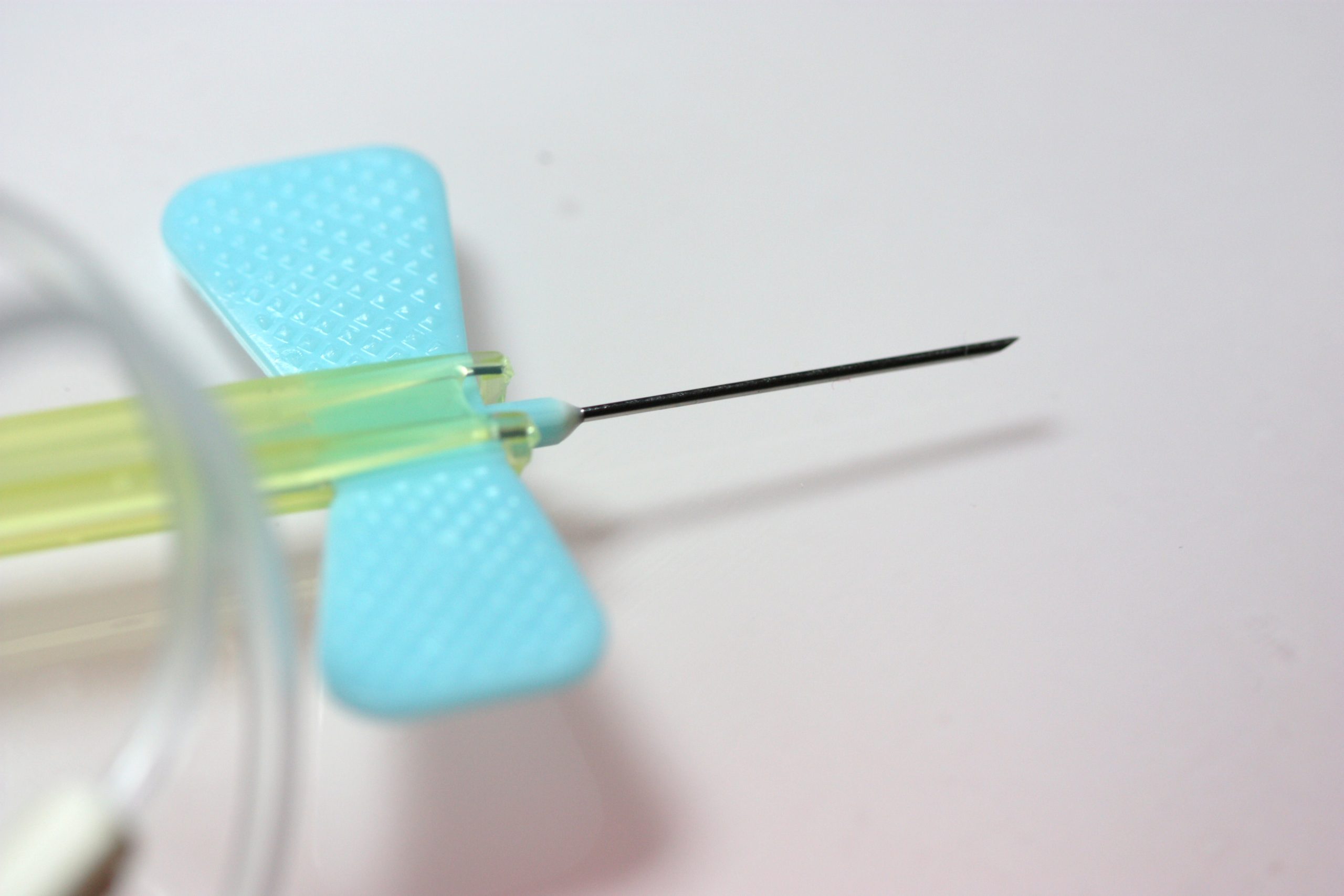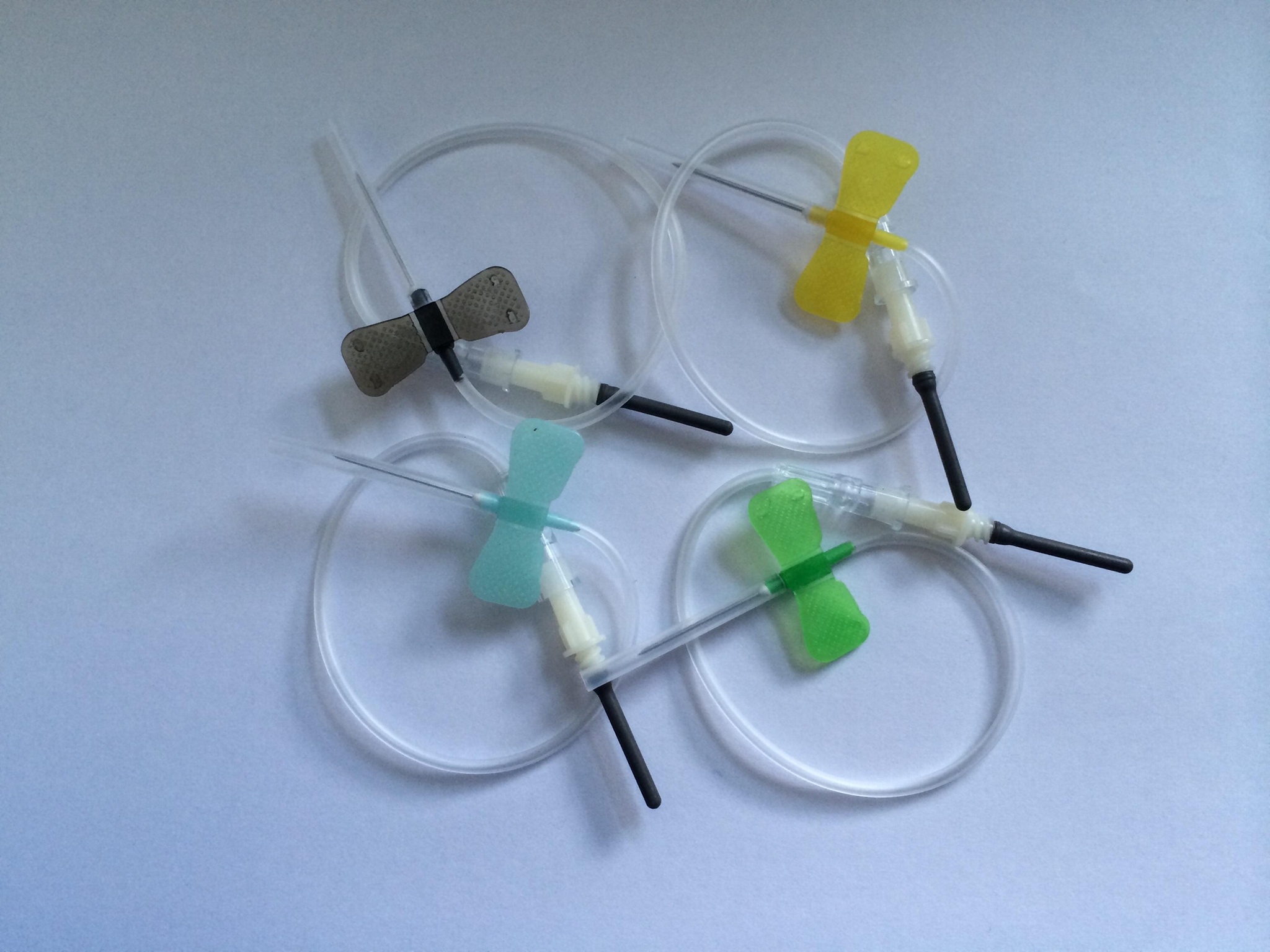A butterfly needle, also known as a winged infusion set or scalp vein set, is an intravenous (IV) catheter used for blood draws and fluid infusions. Most commonly used in pediatric settings, this needle minimizes pain and discomfort during the insertion process while helping to reduce the risk of bruising or bleeding. Here’s how you can use it to prevent and manage these issues:
A butterfly needle consists of two parts – the metal tubing with three wings on its base and a sharp point on one end, which is designed to pierce through the skin. This type of IV catheter is typically attached to a syringe filled with saline solution or other fluids that are required for various treatments. The wings help secure the device against the patient’s skin, making it easier to insert without causing much discomfort or damage.
Benefits Of Using A Butterfly Needle
The primary benefit of using a butterfly needle is that it helps minimize pain and discomfort when inserting an IV line into an individual’s veins. As compared to regular needles, this device provides more stability during insertion because of its wings, which help keep it in place even when performing certain movements such as flexing the arm or changing positions. In addition, it reduces the risk of bruising or bleeding due to its shallow insertion depth combined with its broad area at contact with the skin surface.

Preparing For Insertion
When preparing for the insertion of a butterfly needle into a person’s veins, several steps must be taken in order to ensure successful treatment outcomes:
1. Cleanse The Skin:
First, clean any dirt from the area where you plan to insert the IV line using antiseptic wipes or soap and water; this will help reduce the risk of infection from bacteria entering through open wounds or abrasions near the injection site.
2. Locate the vein:
Next, find out exactly where you need to insert the needle by gently palpating the arms until the desired vein is found – if possible, try to ask the patient where they prefer their IV line to be inserted beforehand, so you can be prepared to spend time looking for suitable options during the procedure itself.
3. Prepare equipment:
Ensure that you have all the necessary equipment before you start the procedure – including gloves (for the doctor/nurse), alcohol swabs/antiseptic wipes (to clean the injection site), gauze (if needed), strips of tape (to secure the IV line once it is in place), etc.
4. Insert the needle:
Finally, begin to insert the butterfly needle into the intended vein, being careful not to push down too hard as this could cause damage; once fully inserted, use the tape strips provided earlier if required, then attach the syringe filled with saline solution/fluids as required by the treatment protocol, followed by flushing the line as normal routine…
5. Flush the line:
Once the insertion is complete, flush the line with a 10mL syringe filled with normal saline, then attach the appropriate connectors depending on the type of infusion being given, whether continuous intravenous therapy (CIVT) or intermittent pump-assisted medication delivery system (IPAMS). If all goes according to plan, continued monitoring should be carried out for the duration specified by the clinician overseeing the case, until finally the entire set-up is removed when no longer required!
Managing bruising and bleeding with a butterfly needle
If the insertion has been done correctly, there shouldn’t be any major complications associated with bruising/bleeding, but if any do occur, here are some tips on how best to manage them:
1. Ice pack treatment:
Apply a cold compress-like ice pack directly on the affected area for 20 minutes at a time interspersed with 15-minute breaks until the swelling subsides significantly enough to allow proper functioning again without fear of re-injury caused by excessive pressure building up in the particular region…
2. compression bandages:
The use of compression bandages wrapped around bruised limb provide additional support, limit mobility further reduces the chance of recurrence of similar problems later down the road whilst simultaneously helping to reduce inflammation via gentle massaging motion exerted each time wrapped either tighter, looser fit depending on preference/needs current situation requires…

3. medication:
Depending on the severity of the problem, it may be necessary to take medication prescribed by the doctor; anti-inflammatory drugs such as ibuprofen, naproxen, sodium acetylsalicylic acid, aspirin, etcetera all have proven track records of helping alleviate the pain associated with trauma, soothing affected areas and providing relief long enough for the patient to be able to comfortably move about again normally…..
4. rest:
Finally, rest is an important part of the healing process because it allows the body an adequate amount of time to heal itself naturally without being put under undue stress preventing muscle tears from happening in the future – get plenty of sleep maintain a healthy diet exercise regime balanced lifestyle overall improve chances of speedy recovery from injury completely!
Conclusion
In conclusion, using a butterfly needle is an effective way to perform IV treatments while minimizing pain and discomfort during insertions as well as reducing risks related to bruising and bleeding afterward due to its shallower insertion depth combined with wide contact surface area against the skin surface itself making safer option over traditional needles alone thus allowing patients to receive care much faster less strain on the medical staff who are responsibly administering intravenous therapies themselves irrespective of age, gender, race, religion etcetera.




